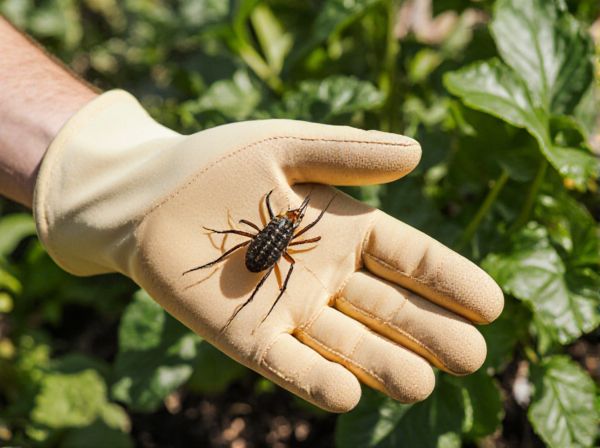
Natural pest predators vs manual pest removal Illustration
Natural pest predators offer an eco-friendly solution by controlling pest populations without harmful chemicals, enhancing biodiversity and soil health. Manual pest removal, while effective for immediate control, is labor-intensive and often less sustainable for large-scale or recurring infestations. Using natural predators promotes long-term balance in the ecosystem, reducing the need for repeated interventions.
Table of Comparison
| Feature | Natural Pest Predators | Manual Pest Removal |
|---|---|---|
| Effectiveness | High, controls pests sustainably | Moderate, labor-intensive and temporary |
| Environmental Impact | Eco-friendly, supports biodiversity | Minimal, but can disturb plants |
| Cost | Low to moderate, initial setup required | Low, but time-consuming |
| Labor Requirement | Low, self-sustaining once established | High, continuous manual effort |
| Long-term Sustainability | High, integrates with ecosystem | Low, no lasting pest control |
Introduction to Organic Pest Management
Natural pest predators play a crucial role in organic pest management by maintaining ecological balance and reducing pest populations without chemicals. Manual pest removal, while effective for small infestations, is labor-intensive and less sustainable for large-scale farming. Utilizing beneficial insects such as ladybugs and predatory mites supports long-term plant health and aligns with organic agriculture principles.
Understanding Natural Pest Predators
Natural pest predators, such as ladybugs, lacewings, and parasitic wasps, play a crucial role in sustainable agriculture by naturally controlling pest populations without harmful chemicals. These beneficial insects target common garden pests like aphids, mites, and caterpillars, reducing the need for manual pest removal and chemical interventions. Understanding the behavior and habitat requirements of natural predators enhances their effectiveness, making them an essential component of integrated pest management in organic farming.
Benefits of Encouraging Beneficial Insects
Encouraging beneficial insects like ladybugs, lacewings, and predatory wasps enhances natural pest control by reducing harmful pest populations without chemical intervention. These natural pest predators improve biodiversity and soil health while minimizing environmental impact and labor costs associated with manual pest removal. Leveraging beneficial insects supports sustainable organic gardening and promotes long-term ecosystem balance.
Manual Pest Removal: Methods and Effectiveness
Manual pest removal involves physically removing pests from plants using techniques like handpicking, pruning infested leaves, or using water sprays to dislodge insects. This method is highly effective for small gardens or localized infestations, minimizing chemical use and preserving beneficial insects. Consistent monitoring and prompt action enhance the success of manual pest removal in maintaining healthy, pest-free organic crops.
Comparing Efficiency: Predators vs Handpicking
Natural pest predators like ladybugs and lacewings provide continuous, targeted pest control by consuming large numbers of harmful insects and maintaining ecological balance. Manual pest removal through handpicking is labor-intensive and less consistent, often missing hidden pests and requiring frequent monitoring to be effective. Studies show that integrating natural predators yields higher long-term pest suppression and improved crop health compared to solely relying on manual methods.
Environmental Impact of Each Approach
Natural pest predators maintain ecological balance by targeting pests without disrupting beneficial insect populations, thereby preserving biodiversity and soil health. Manual pest removal minimizes chemical use but can be labor-intensive and less effective for large infestations, potentially leading to repeated disturbance of plants and soil. Both methods avoid toxic pesticides, but natural predators offer a sustainable solution with lower environmental impact through biological control.
Cost and Labor Considerations
Natural pest predators offer a cost-effective solution for organic pest management by reducing the need for frequent manual labor and expensive chemical treatments. While manual pest removal can be labor-intensive and time-consuming, introducing beneficial insects like ladybugs or predatory mites provides ongoing pest control with minimal intervention. This sustainable approach lowers operational costs and decreases physical effort, making it ideal for organic farming systems.
Integrating Both Strategies for Best Results
Integrating natural pest predators with manual pest removal enhances organic garden health by combining biological control with targeted intervention. Natural predators like ladybugs and predatory nematodes reduce pest populations sustainably, while manual removal addresses immediate infestations and protects valuable plants. This dual approach maximizes pest management efficiency, reduces chemical dependency, and promotes ecological balance.
Common Mistakes in Organic Pest Control
Relying solely on natural pest predators without monitoring pest population can lead to ineffective control and crop damage. Manual pest removal often misses early infestation signs, allowing pests to reproduce rapidly. A common mistake in organic pest control is neglecting integrated strategies that combine biological and physical methods for optimal results.
Tips for Maintaining a Balanced Garden Ecosystem
Encouraging natural pest predators like ladybugs and lacewings promotes a balanced garden ecosystem by naturally controlling pest populations without harmful chemicals. Planting diverse native species and providing habitats such as flowering plants and ground cover supports these beneficial insects year-round. Regularly monitoring garden health and reducing manual pest removal allows predator populations to thrive and maintain sustainable pest control.
Natural pest predators vs manual pest removal Infographic

 gardendif.com
gardendif.com